 |
 |
 |
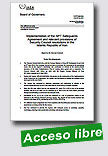 |
Implementation of the NPT Safeguards Agreement and Relevant Provisions of Security Council Resolutions in the Islamic Republic of Iran - Report by the Director General
IAEA Board of Governors , 29 May 2015, 21 p..
This report of the Director General to the Board of Governors and, in parallel, to the Security Council, is on the implementation of the NPT Safeguards Agreement and relevant provisions of Security Council resolutions in the Islamic Republic of Iran (Iran). It contains information, inter alia, regarding the implementation of measures under the
|
Joint Statement on a Framework for Cooperation’ (the Framework for Cooperation) and the Joint Plan of Action (JPA), as further extended.
Extraído de: http://isis-online.org/uploads/isis-reports/documents/iaea-iranreport-05292015.pdf |
 |
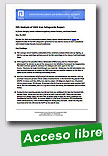 |
ISIS Analysis of IAEA Iran Safeguards Report Institute for Science and International Security, May 29, 2015, 21 p.
ISIS's analysis of the IAEA's latest report on the status of Iran's compliance with its safeguards obligations
|
Extraído de: http://isis-online.org/
|
 |
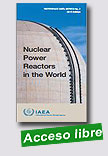 |
Nuclear Power Reactors in the World - 2015 Edition
IAEA Reference Data Series, 2015, 79 p.
This is the 35th edition of Reference Data Series No.2, which presents the most recent reactor data available to the IAEA. It contains summarized information as of the end of 2014 on power reactors operating, under construction and shut down as well as performance data on reactors operating in the IAEA Member States. The information is collected through designated national correspondents in the Member States and the data are used to maintain the IAEA's Power Reactor Information System (PRIS). |
Extraído de:
http://www-pub.iaea.org/books/IAEABooks/10903/Nuclear-Power-Reactors-in-the-World-2015-Edition
|
 |
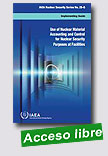 |
Nuclear material accounting and control (NMAC) works in a complementary fashion with the international safeguards programme and physical protection systems to help prevent, deter or detect the unauthorized acquisition and use of nuclear materials. These three methodologies are employed by Member States to defend against external threats, internal threats and both state actors and non-state actors. This
|
publication offers guidance for implementing NMAC measures for nuclear security at the nuclear facility level. It focuses on measures to mitigate the risk posed by insider threats and describes elements of a programme that can be implemented at a nuclear facility in coordination with the physical protection system for the purpose of deterring and detecting unauthorized removal of nuclear material.
Extraído de: http://www-pub.iaea.org/books/IAEABooks/10763/Use-of-Nuclear-Material-Accounting-and-Control-for-Nuclear-Security-Purposes-at-Facilities
|
 |
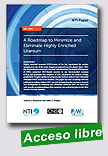 |
A Roadmap to Minimize and Eliminate Highly Enriched Uranium
Nuclear Threat Initiative, May 2015, 16 p.
Highly enriched uranium (HEU)—one of the key ingredients for nuclear weapons—is one of the most dangerous materials on the planet. Since 1992, the international community removed and eliminated thousands of kilograms of HEU, converted HEU-fueled reactors to use low-enriched uranium (LEU), and promoted the adoption of LEU alternatives for medical isotope production. Despite significant progress, the work to
|
reduce—and ultimately eliminate—HEU is far from finished. This paper lays out a roadmap with five pathways to ending civilian HEU use and to beginning the necessary research and development to minimize and ultimately eliminate HEU for naval use, with specific recommendations that countries can undertake prior to the 2016 Nuclear Security Summit.
Extraído de: http://www.nti.org/media/pdfs/HEU_Roadmap_
Report_FINAL.pdf?_=1432649611
|
 |
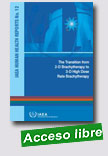
|
The Transition from 2-D Brachytherapy to 3-D High Dose Rate Brachytherapy
IAEA Human Health Reports, 2015, 33 p.
Brachytherapy is a major treatment modality in the treatment of common cancers including cervical cancer. This publication addresses the recent technological change in brachytherapy treatment planning with better access to 3-D volumetric patient imaging modalities including computed tomography (CT) and magnetic resonance (MR) as opposed to traditional 2-D planar images. In the context of 2-D and 3-D brachytherapy, the |
publication provides definitions, clinical indications, transitioning milestones, commissioning steps, quality assurance measures, and a related questionnaire. Staff training and resourcing are also addressed. The publication will serve as a guide to radiotherapy departments in Member States who wish to make the transition from 2-D to 3-D brachytherapy.
Extraído de:
http://www-pub.iaea.org/books/IAEABooks/10705/The-Transition-from-2-D-Brachytherapy-to-3-D-High-Dose-Rate-Brachytherapy
|
 |
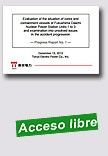 |
Report on the Investigation and Study of Unconfirmed/Unclear Matters in the Fukushima Nuclear Accident - Progress Report No.3
Tokyo Electric Power Company, Inc., May 20, 2015, 32 p.
Engineers at the Tokyo Electric Power Co. have issued their latest report on the findings of their continuing inquiry into some of the important technical questions that remain about exactly how the March 2011 accident at Fukushima Daiichi unfolded at each of the affected reactors.
|
The findings help validate the measures taken to strengthen the Kashiwazaki-Kariwa Nuclear Power Station[KK], for which the company is seeking restart approval from the government
Progress Report No. 3 | Press release Progress Report No. 3
Progress Report No. 2 | Press release Progress Report No. 2
Progress Report No. 1 | Press release Progress Report No. 1
Extraído de: http://www.tepco.co.jp/en/press/corp-com/release/2015/1250927_6844.html
|
 |
 |
An Ecomodernist Manifesto
ecomodernism.org, April 2015, 32 p.
A manifesto to use humanity´s extraordinary powers in service of creating a good Anthropocene.
We offer this statement in the belief that both human prosperity and an ecologically vibrant planet are not only possible, but also inseparable. By committing to the real processes, already underway, that have begun to decouple human well-being from environmental destruction, we believe that such a future might be achieved. As such, we embrace an optimistic view toward human capacities and the future. |
Authors | Manifesto home-page
Extraído de: http://www.ecomodernism.org/
|
 |
|
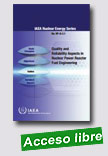
|
Quality and Reliability Aspects in Nuclear Power Reactor Fuel Engineering
IAEA Nuclear Energy Series, 2015, 224 p
In order to decrease costs and increase competitiveness, nuclear utilities use more challenging operational conditions, longer fuel cycles and higher burnups, which require modifications in fuel designs and materials. Different aspects of quality assurance and control, as well as analysis of fuel performance have been considered in a number of specialized publications. The present publication provides a concise but
|
comprehensive overview of all interconnected quality and reliability issues in fuel fabrication, design and operation. It jointly tackles technical, safety and organizational aspects, and contains examples of state of the art developments and good practices of coordinated work of fuel designers, vendors and reactor operators.
Extraído de: http://www-pub.iaea.org/books/IAEABooks/10576/Quality-and-Reliability-Aspects-in-Nuclear-Power-Reactor-Fuel-Engineering
|
 |
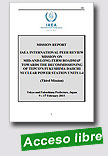 |
IAEA International Peer Review Mission on Mid-and-Long-Term Roadmap Towards Decommissioning of TEPCO's Fukushima Daiichi NPS Units 1-4 (Third Mission) (9 - 17 February 2015), Mission Report, 13 May 2015
IAEA, 13 May 2015, 58 p.
The International Atomic Energy Agency (IAEA) today released a report containing the assessment of an IAEA expert team that reviewed progress in Japan's efforts to plan and implement the decommissioning of the Fukushima Daiichi Nuclear Power Station.
|
The report is based on findings made during a 9-17 February 2015 visit to Tokyo and the Fukushima accident site by the 15-member team. The mission was the IAEA's third International Peer Review of Japan’s Mid-and-Long-Term Roadmap towards the Decommissioning of TEPCO's Fukushima Daiichi Nuclear Power Station Units 1-4.
The final report of the third mission, handed to Japanese authorities yesterday, follows the preliminary summary report that was released at the end of the mission.
Today's report states that "Japan has achieved good progress in improving its strategy and the associated plans, as well as in allocating the necessary resources towards the safe decommissioning" of Fukushima Daiichi.
"Since the previous IAEA missions, the Government of Japan and TEPCO have implemented planned measures aimed at reducing nuclear and radiological hazards on the site and safely decommissioning the plant."
The report acknowledges that the Japanese government and TEPCO had taken into account advice provided following earlier IAEA missions to enhance planning and decommissioning. The report contains advisory points on topics such as long-term radioactive waste management, measures against contaminated water and issues related to the removal of spent nuclear fuel and fuel debris.
An annex to the report contains the findings of IAEA experts who, at the request of Japan's government, visited Japan from 17 to 21 April 2015 to receive additional information about the management of contaminated water and TEPCO's efforts to improve public communication and outreach.
Press release
Extraído de:
https://www.iaea.org/newscenter/pressreleases/iaea-issues-report-fukushima-decommissioning-review
|
| |
| |
|
|
| |
|
|
|
| |
|
|
|
| |
|
